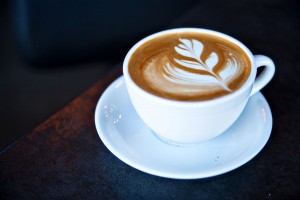As you stroll through the HUB on almost any given morning of the school year, the everlasting Starbucks line is hard to miss. Interestingly enough, the line always seems to be composed of mostly females. While the occasional male or two appears in the line, this drastic gender difference is not something I want to ignore. Since the line is most active in the morning, I assume that the majority of people in line are waiting to buy caffeinated drinks. I noticed a similar pattern at my high school, where it was typical for girls to arrive to first period with a cup of coffee in hand. However, this was not a regular scenario for the opposite gender. Is this because caffeine has a greater or different impact on the female body?
My alternative hypothesis is that caffeine impacts the female body differently than the male body, and my null hypothesis is that caffeine has the same effect on both genders. In this randomized double-blind placebo study, 8 females and 8 males were randomly assigned to either drink caffeinated coffee or a placebo at midnight and 4am, and the placebo group showed more signs of drowsiness. Females reported themselves as drowsier at 5am, and the body temperature of females increased between midnight and 5am, while males’ decreased. Another study again tested drowsiness with a placebo and non placebo, but instead with 9 male and 9 female subjects. In this experiment, effort of performing tasks was increased by caffeine for females, and decreased for males.
Another article points out caffeine’s varying effect on the different genders. Caffeine consumption can decrease the risk of Parkinson’s for males, but for females, estrogen replacement therapy can prevent this. In this observational longitudinal study, changes in cognitive function of coffee drinkers differed slightly between males and females over the course of almost 8 years. However, some results of the study require further investigation. 688 undergraduates volunteered to participate in a randomized double-blind placebo experiment. The researchers only tested the subjects with a small dosage of caffeine (100 mg), but they found that caffeine effected men to a greater extent than women, and the decaffeinated drinks effected women more than men.
Caffeine does effect the male and female body differently, proving my alternative hypothesis. However, caffeine does not necessarily impact females than it impacts males. The differences that caffeine has on the male and female body do not explain the female-flooded Starbucks line. Instead, the line could be due to confounding variables. For example, women could have a higher concern for social appearance, or they could be in line for other non-caffeinated drinks. Also, women might like fruity drinks like iced tea more than men, or they might even be more vulnerable to the seasonal specialties that Starbucks offers.
http://www.tandfonline.com/doi/abs/10.1080/00140139508925157
http://aje.oxfordjournals.org/content/160/10/977.full
http://content.iospress.com/articles/journal-of-alzheimers-disease/jad110431
http://www.sciencedirect.com/science/article/pii/S0278584608002030


